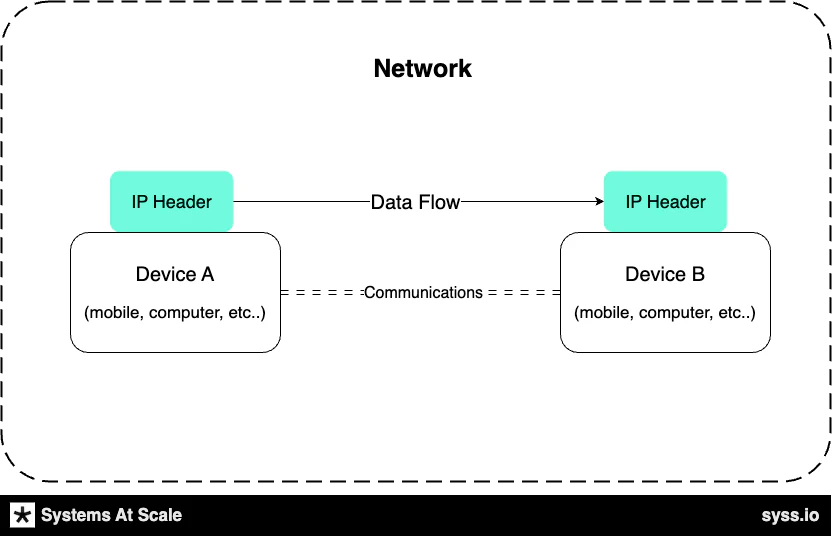
A network is a group of two or more devices that are connected together to share resources and exchange data.
The devices on a network can be computers, printers, servers, or other devices.
The most common way to connect devices to a network is through a physical cable, such as an Ethernet cable or a coaxial cable. However, networks can also be wireless, using technologies such as Wi-Fi or Bluetooth.
Once the devices are connected to the network, they need to be able to communicate with each other. This is done through a set of rules called protocols.
Protocols define how the devices on the network will interact with each other.
Consider the following scenario: You want to talk to your neighbour who speaks Spanish, and you speak English. You can talk to your neighbour in English (i.e. transfer bytes of information). Still, your neighbour will need help understanding you. They can physically hear you (receive the bytes of data) but will not understand you.
Now, say your other neighbour speaks English. How would you go about talking to your English-speaking neighbour?
Well, to speak to your neighbour, you need to:
This is a simple example of a protocol, a standardized set of rules to follow to achieve the end goal. You must complete one of these steps to talk to your neighbour, for example, you can not start talking before your neighbour opens the door or say goodbye before you start talking.
This demonstrates that we have protocols or set of rules that work subconsciously in the real world and do not even think about them. But in the world of computers, we need to define these protocols and ensure that all the devices on the network speak the same language and follow the same rules.
If we oversimplify, we can break down understanding computer networks into two parts:

This article provides a comprehensive guide to IP addressing for software engineers. It covers the basics of IP addresses, including their different types, classes, and subnetting. The article also discusses IPv6 addresses and their benefits over IPv4.

Learn the basics of data communication in networking, including the role of network protocols, and the practical applications of understanding data communication. This article is essential reading for software engineers and developers who want to build reliable and secure networked applications.